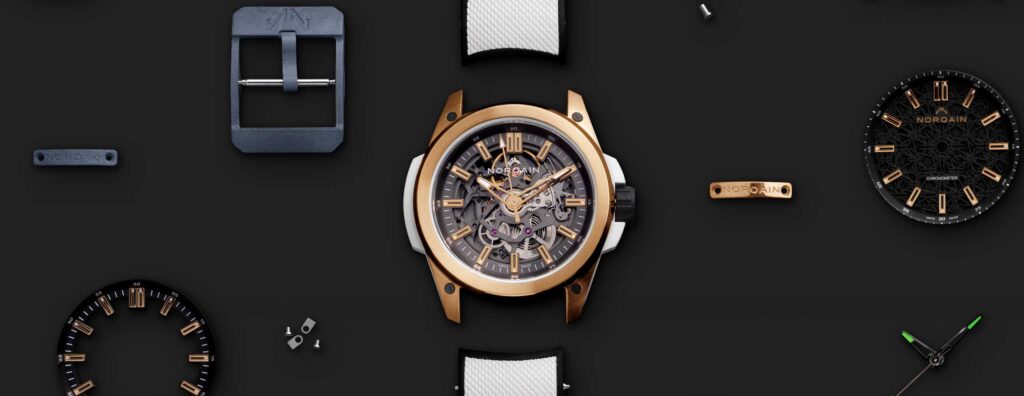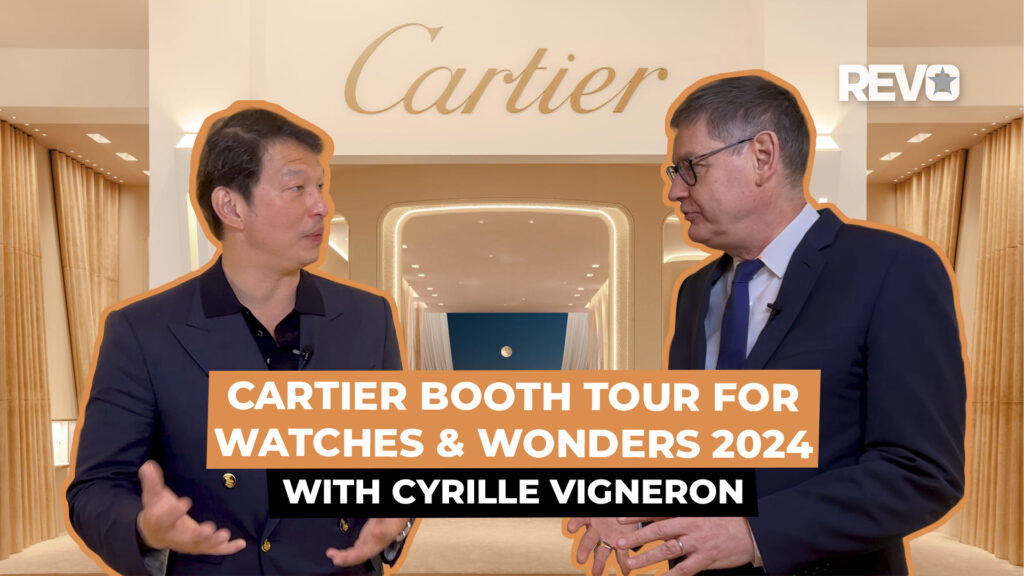News
A Half-Century as an Icon: The Rolex Explorer II 50th Anniversary
News
A Half-Century as an Icon: The Rolex Explorer II 50th Anniversary

1971–1985: Reference 1655
The ref. 1655 is one of my all-time-favorite Rolex watches. It was also the very first vintage Rolex I ever purchased. Quite honestly, I can’t imagine cave exploration being that much of a hobby for the majority of Rolex owners; instead, if you were to suggest “chardonnay tasting”, I think you would find a much more receptive audience. However, Speleology, which is the study of caves, and spelunking certainly conjure up the right romantic image. Presumably, the brilliant marketing minds of Rolex realized that they had already made the two most iconic watches related to the sea, the Submariner and the Sea-Dweller; and the most iconic watch related to the air, the GMT–Master II, which was created at the behest of pilots. Since Rolex is already closely associated with the conquest of Everest, pragmatically they probably realized that caving was the last area that the brand had yet to explore. Anyway there was enough marketing rationale for Rolex to come up with one of the most stunningly designed sports watches ever made.
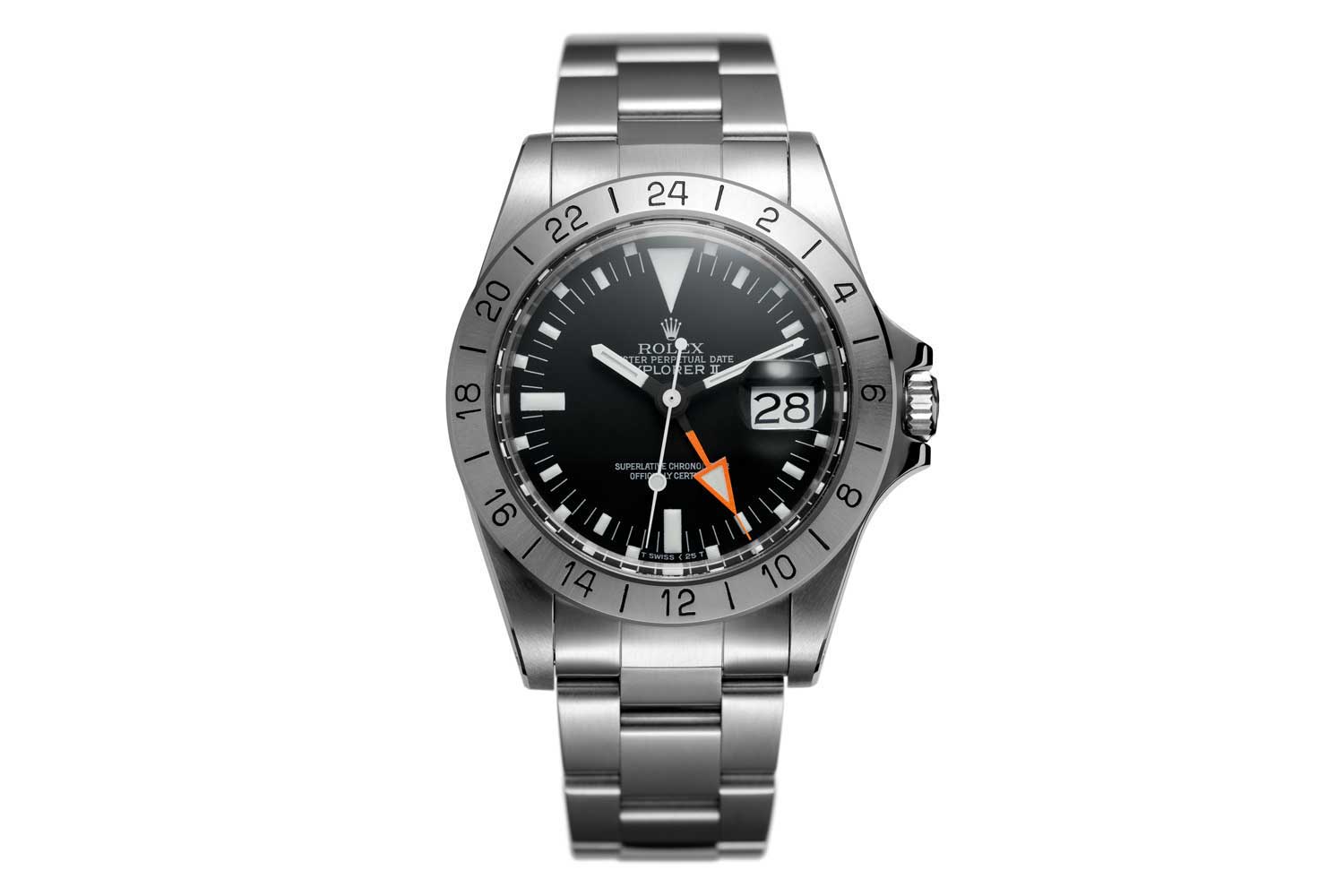
A 1971 ref. 1655 Rolex Explorer II
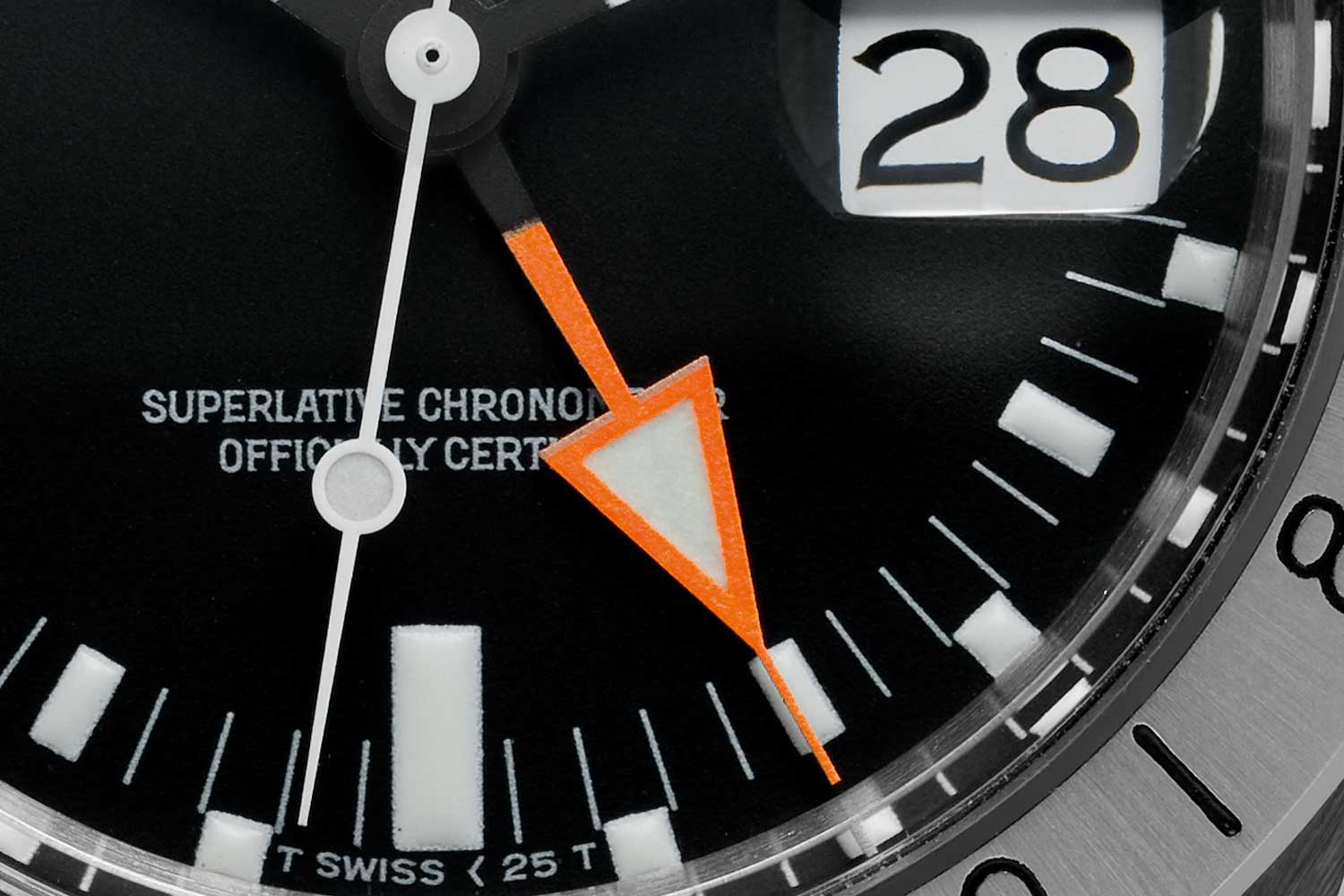
Big orange arrowhead 24-hour hand of the ref. 1655 Rolex Explorer II
1985 –1989: Reference 16550
As it happens, I was alive and in my teens in 1985. Preoccupied as I was by Season 2 of Miami Vice, The Cure’s Head on the Door album, and sneaking into nightclubs like Danceteria, I still vividly remember seeing the ad for the Explorer II Reference 16550. In fact, I recall cutting it out from a magazine and taping it up above my bed where it joined the Porsche 930 Turbo and Phoebe Cates from Fast Times at Ridgemont High as objects of my unbridled affection and adolescent lust. The 16550 is probably the most important Explorer II in that this was the watch that ushered in everything that we now associate with this model.
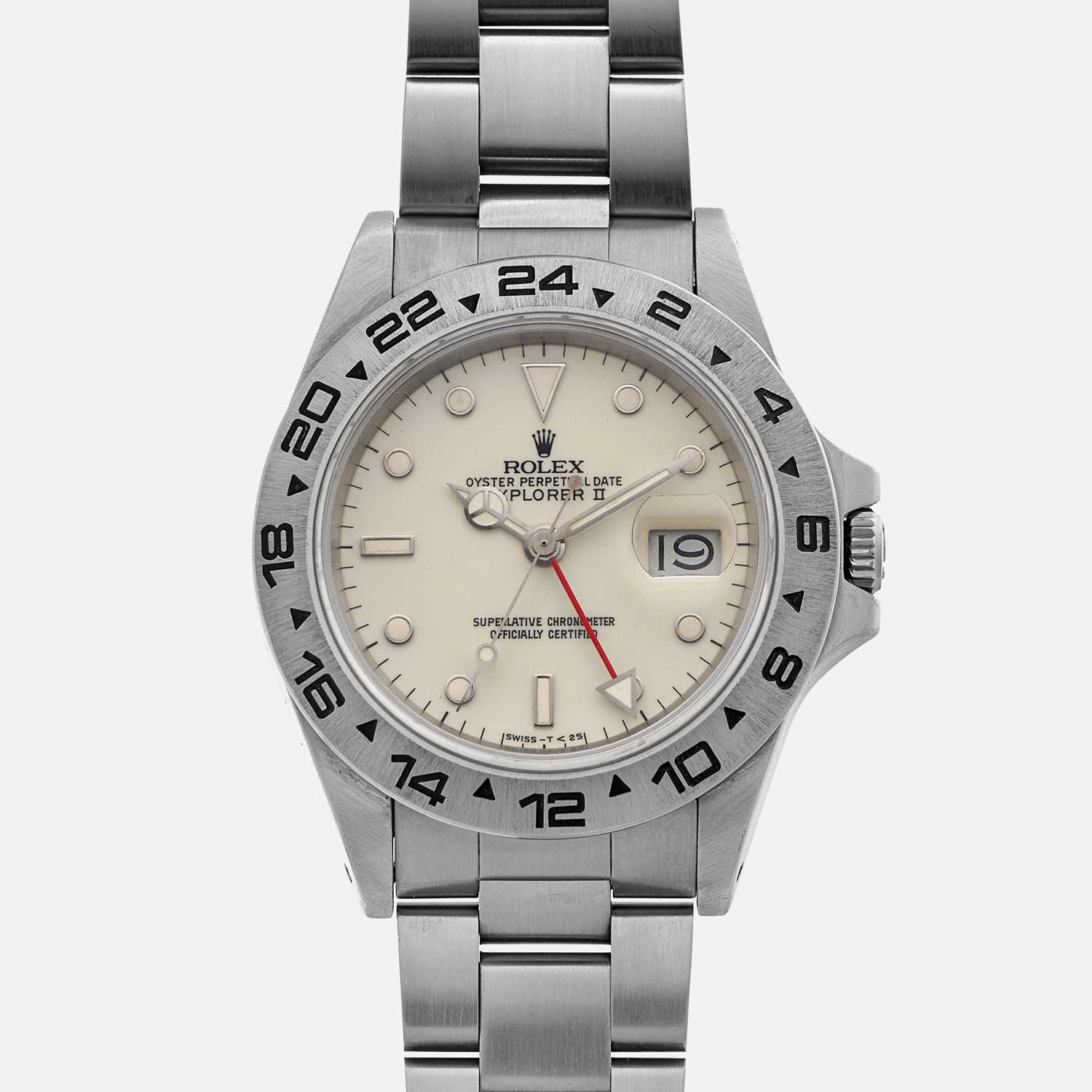
The 16550 is probably the most important Explorer II in that this was the watch that ushered in everything that we now associate with this model.
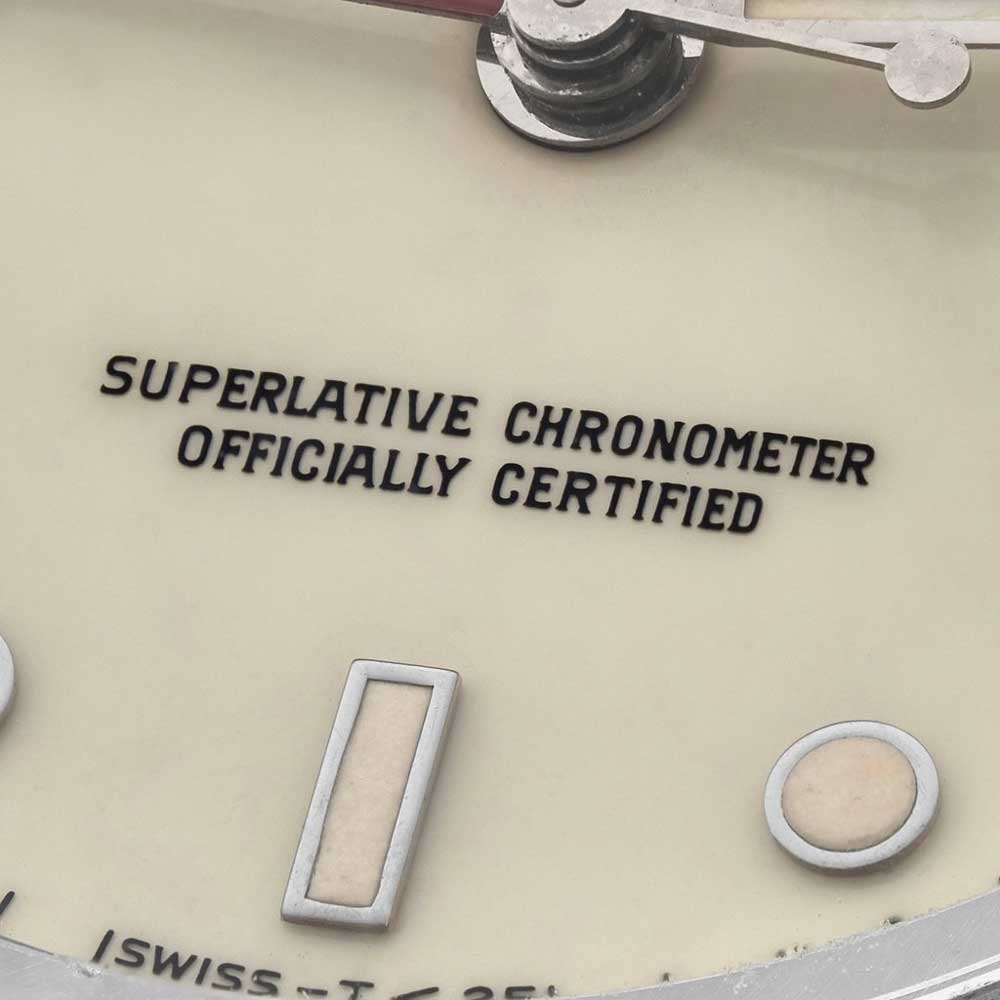
The 16550 is probably the most important Explorer II in that this was the watch that ushered in everything that we now associate with this model.
The 16550 was offered in both black and white dials. Many of the white dials, especially the ones from the first two years of production, turned a stunning cream color with time and are referred to in collecting circles as “cream” or “panna” (the Italian word for bread), and command a premium. This amazing timepiece was only made for four years and, to my mind, is still somewhat undervalued — especially if you can find a nice cream dial watch. Some of these cream dial watches’ tritium has aged to an amber color, and the color combination can be quite appealing. However, you should always check the condition of the tritium in the hands and indices of these watches before purchasing one, as they have a tendency to degrade.
1989–2011: Reference 16750
Remember when I said I cut out an image of the 16550 and taped it on my bedroom ceiling when I was a teen? Over two decades later, I came to possess the successor to this amazing timepiece — though the story about that watch is a little bittersweet. My first real wristwatch was a Rolex Oyster Datejust that was given to me by my uncle when I was 16 years old. What was incredible about that watch was that it had, in turn, been given to him when he was a young man by my grandfather. So, to say the watch had emotional significance was something of an understatement. I wore it all through my teens, through university and on the weekends when I was fulfilling my mandatory national service in the Singapore Army. In the late ’90s, my father found himself on the jury of the Rolex Awards for Enterprise. With the objective of doing me a big favor, he brought my Rolex with him to Geneva for his meeting and had them completely refurbish the watch. On his next trip, he picked up the watch and brought it back with him. He stopped off in New York, but tragically, it was stolen from his hotel room. Hoping not to disappoint me too much, he actually went to Rolex and purchased a new ref. 16570 for me. Of course, I was delighted with the watch, but the memory of my stolen Datejust always tugs at my heartstrings.
Anyway the point to all this is that I know the 16570 very well, and it is pretty much a perfect watch. When people ask me about Rolex, I always say that each time I board a plane, I make sure I am wearing one. Because, God forbid, should that plane go down and I manage to swim to a desert island, I know that I would be able to bash open clamshells and hit small marsupials over the head with my Rolex to provide food for myself, and the watch would still be able to function perfectly.
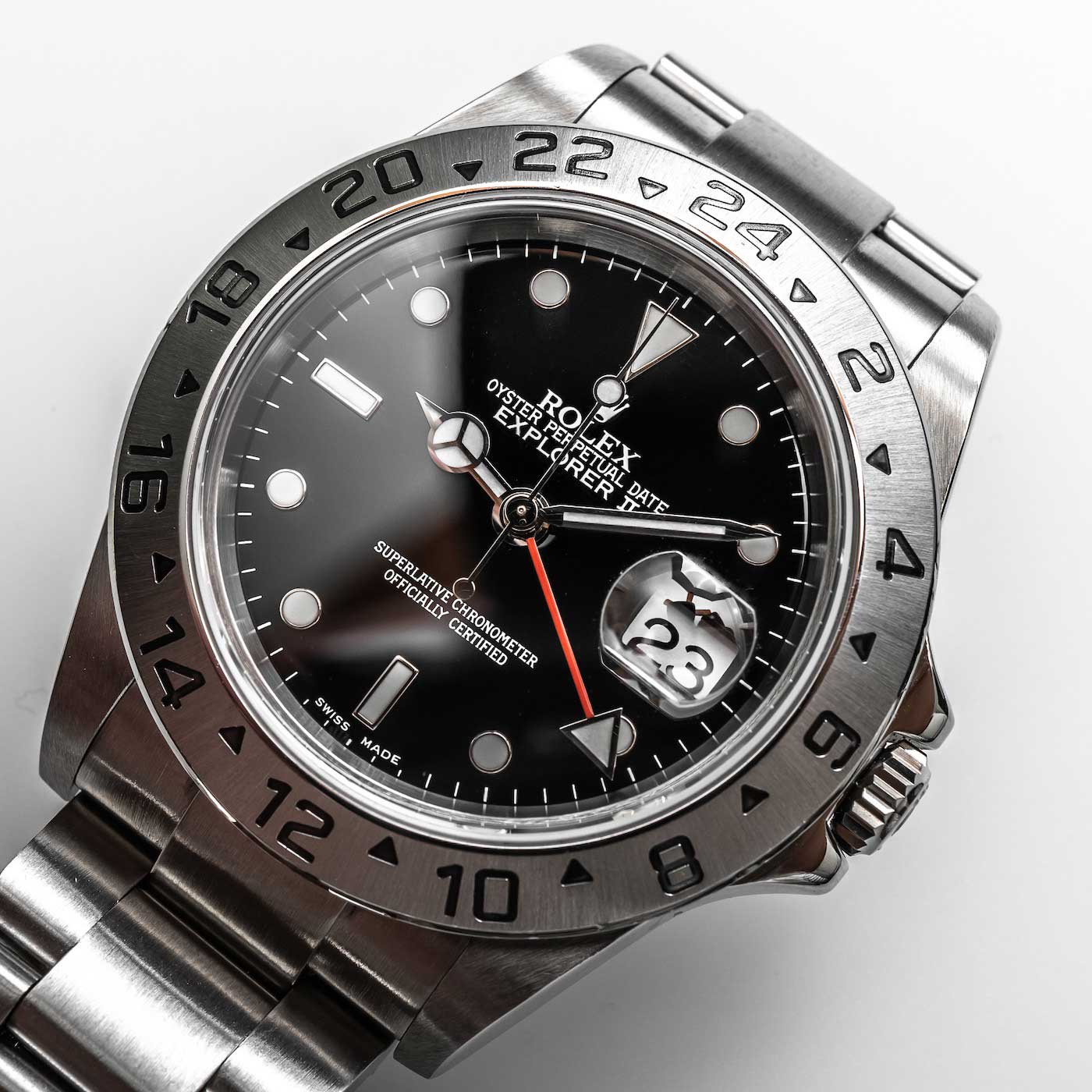
The Rolex 16570
2011–2021: Reference 216570
It’s incredible that this watch was launched a full 10 years ago, as to me, it seemed like just yesterday, we’d celebrated the 40th anniversary of the Explorer II with its unveiling. The Reference 216570 is a sort of “greatest hits” showcase of the Explorer II’s design vocabulary. Part of the anniversary celebrations resulted in the resurrection of the famous orange hand of the ref. 1655, but with the bezel, dial and hands of the ref. 16550 and ref. 16570 — well, almost anyway, because everything on the 216570 was bigger and bolder. The case was at the time a staggering 42mm in diameter. The hands, indices and even the print on the bezel were much thicker, and the common consensus was that this would henceforth be referred to as a “Maxi Dial” Explorer, borrowing from Submariner terminology.
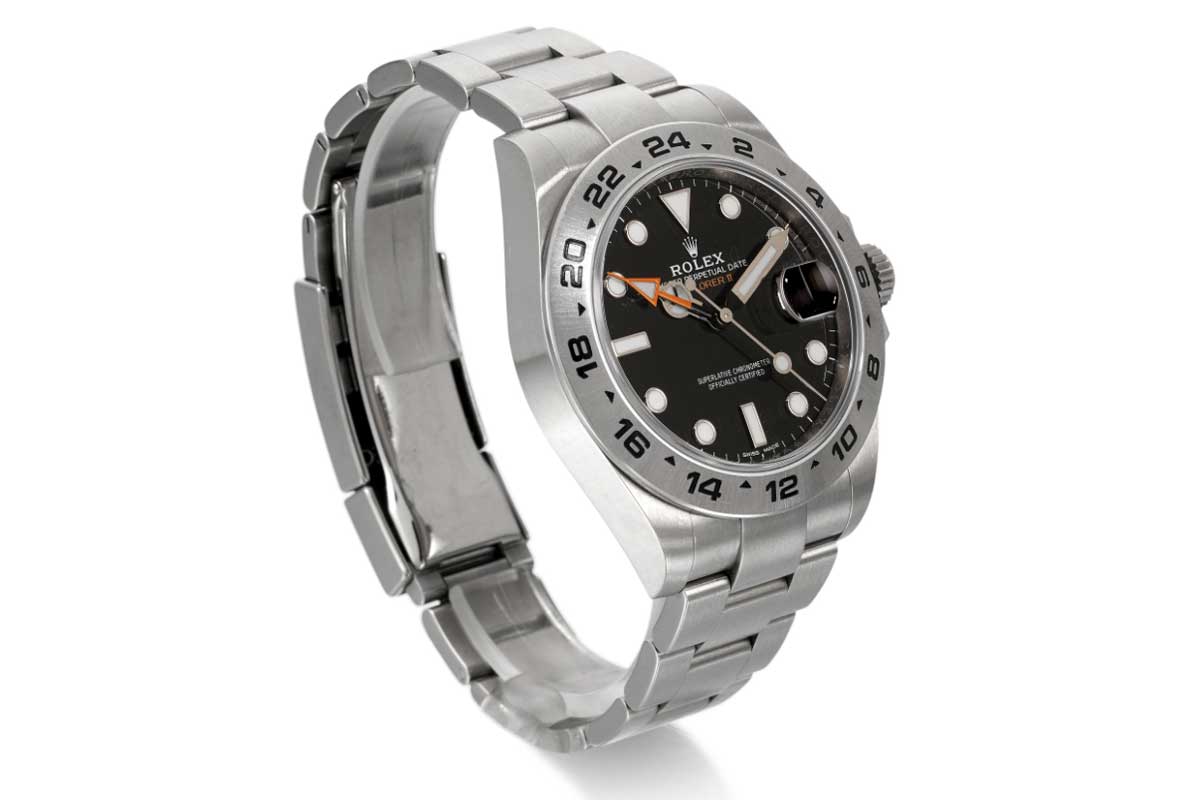
The Reference 216570 is a sort of “greatest hits” showcase of the Explorer II’s design vocabulary.
As it turns out the new Explorer II is not remarkably different looking from the outgoing Explorer II 216570. Well at least not at first. That is until you take a closer look at the profile of the case. While in principle, it measures the same as its 42mm predecessor, like the Submariner that was launched last year, the idea was to create a slimmer feeling profile. It is also now equipped with an Oyster bracelet that features the Oysterlock folding clasp which prevents accidental opening as well as the EasyLink comfort system that allows you to micro adjust the length of the bracelet by up to 5mm.
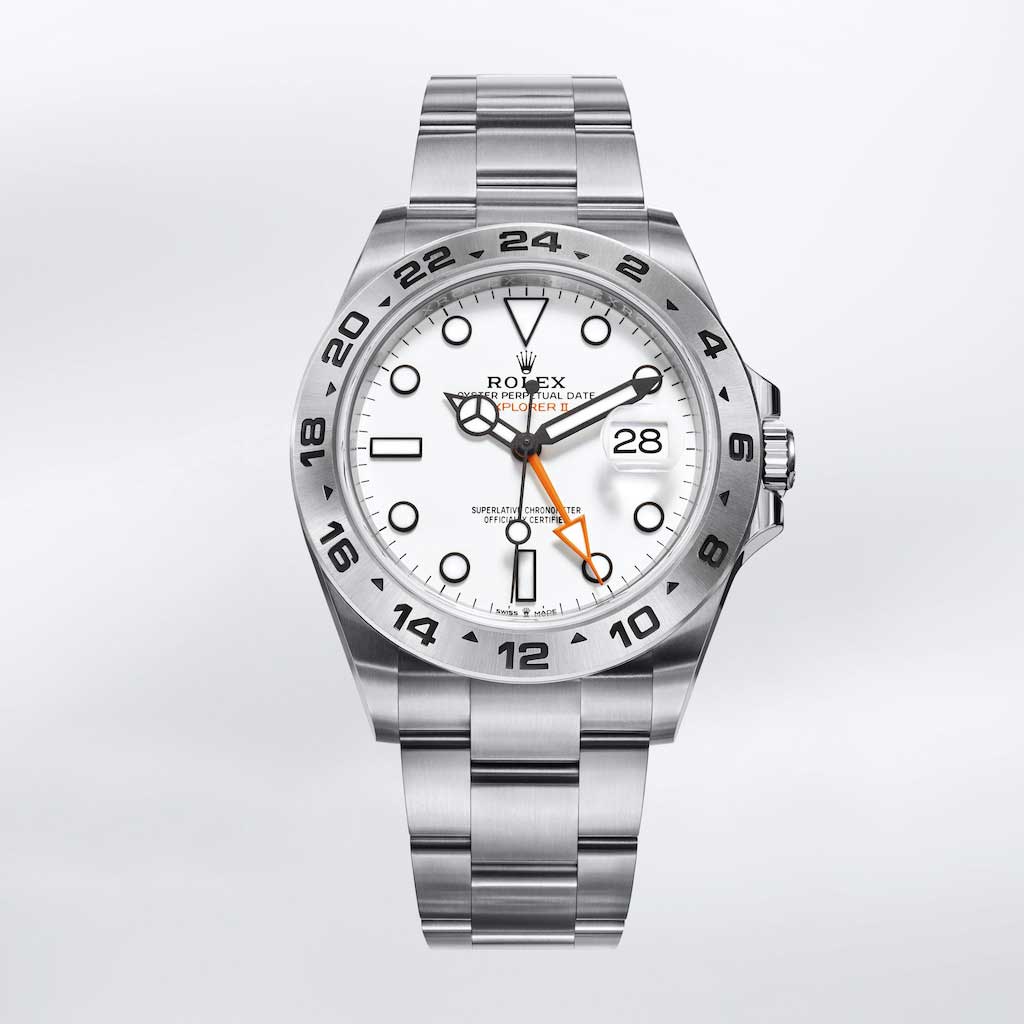
The new Explorer II is powered by Calibre 3285, which was introduced back in 2018 with the GMT Master II.
The Chronergy escapement is Rolex’s proprietary design for a better anchor-style escapement. What sets it apart? First, the geometry of the lever is offset to better optimise leverage on the pallet fork. Second, the pallets are 50-percent thinner than on previous units while the contact surfaces on the escape wheel have doubled in size. Third, the escape wheel is made from nickel phosphorus using the LIGA process (galvanically grown), which means it is impervious to magnetism, as well as being significantly lighter than a steel escape wheel and as a result, taking less energy to restart each time. Knowing Rolex’s attention to detail, pivots and other smaller parts are likely made from nonmagnetic materials as well. Rolex tells us the Chronergy escapement increases efficiency by 15 percent.
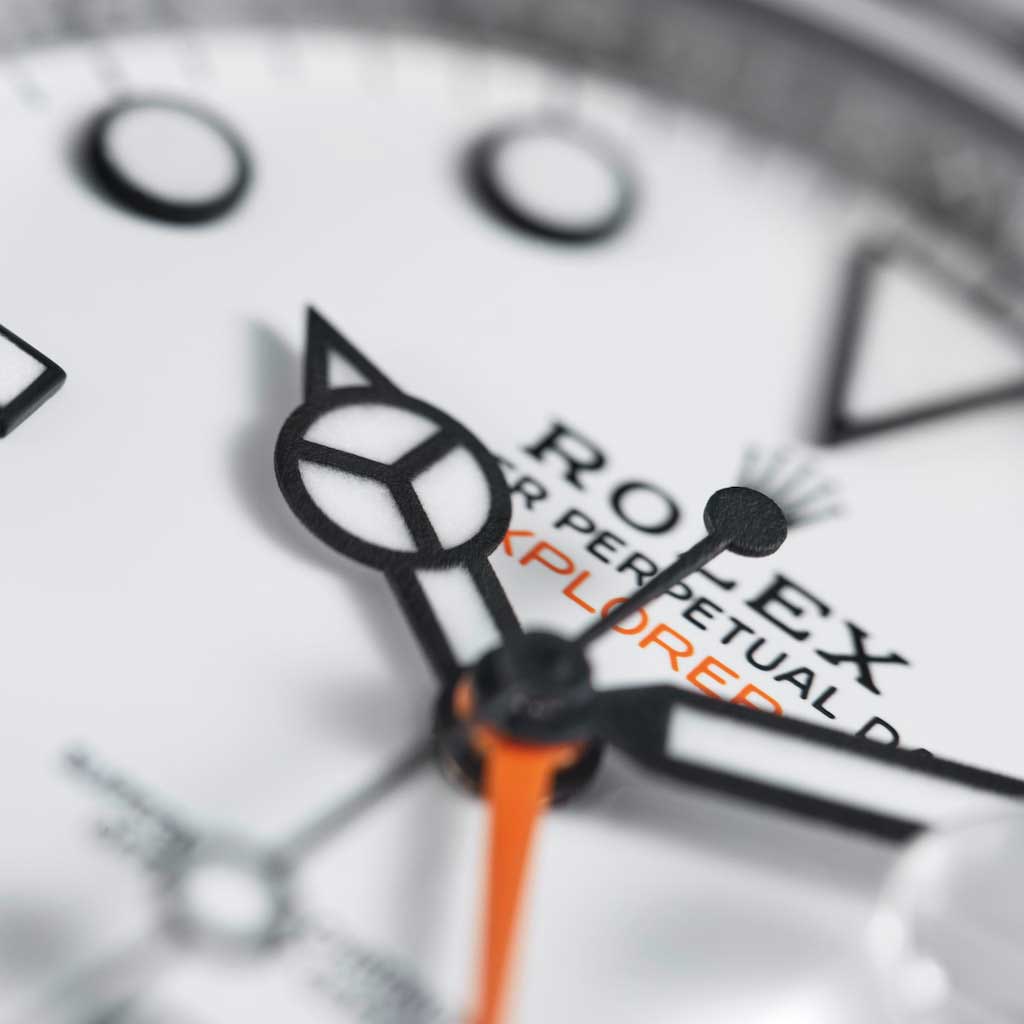
Each 3285 equipped timepiece undergoes Rolex’s in-house Superlative Chronometer test, which is much stricter than the COS certification.
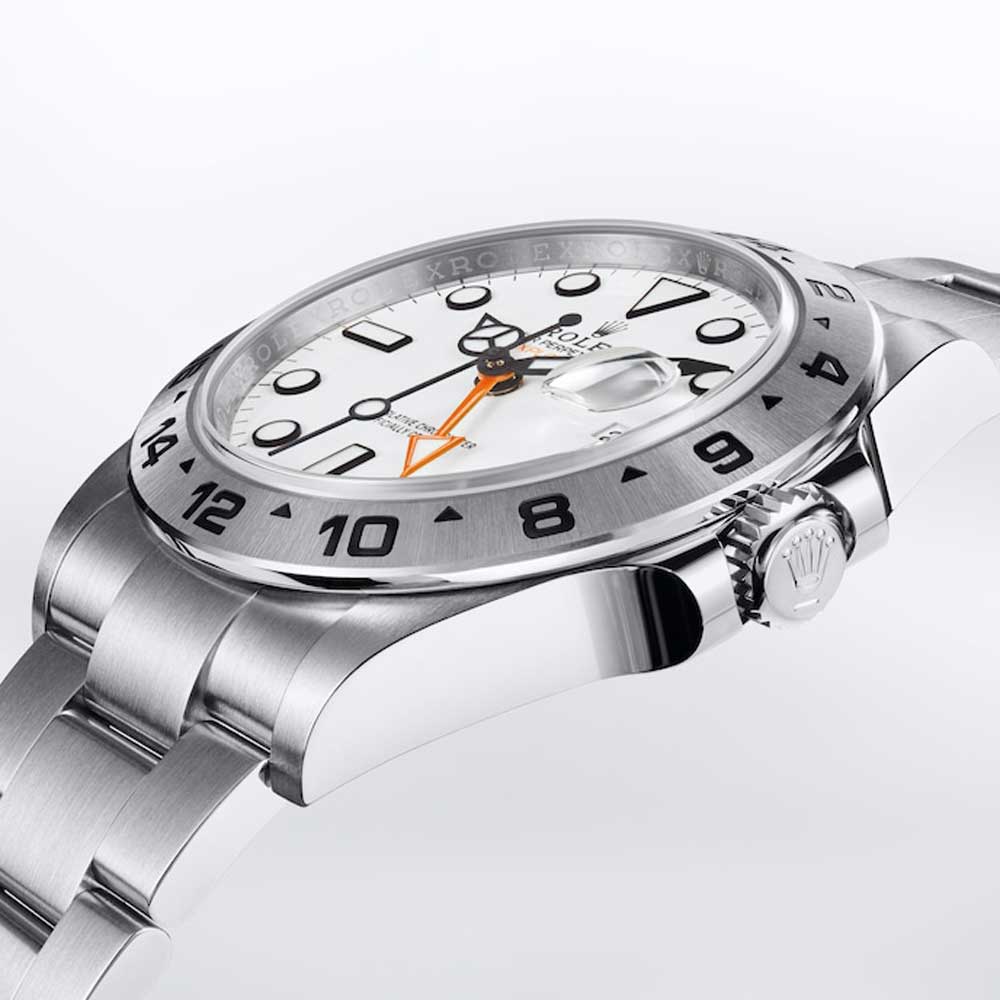
Like all 32 series movements, Calibre 3285 features enhanced power reserve thanks to a high capacity barrel and the Rolex patented Chronergy escapement
Tech Specs
Case
42 mm Oyster (monobloc middle case, screw-down case back and winding crown)
Safety; Integral crown guard ; 24-hour graduated; engraved graduations and numerals, black coating via electrolytic technique; Scratch-resistant sapphire with anti-reflective coating; Cyclops lens over the date with double anti-reflective coating; water-resistant up to 100 meters
Movement
Calibre 3285, Manufacture Rolex • Mechanical movement with bidirectional self-winding via Perpetual rotor; Precision −2 /+2 sec/day; Frequency: 28,800 beats/hour (4 Hz) • Paramagnetic blue Parachrom hairspring ; Rolex overcoil; High-performance Paraflex shock absorbers; Chronergy with optimized energy efficiency • Paramagnetic nickel-phosphorus pallet fork and escape wheel
Functions
Centre hour, minute and seconds hands; independent rapid-setting of the hour hand • Time shown by conventional hands and in 24-hour format via additional 24-hour hand (day/night distinction)
Dial
White lacquer; Matt hour markers in 18 ct white gold, black coating via PVD (Physical Vapour Deposition), highly legible Chromalight (long-lasting luminescence, blue glow); Hands in 18 ct white gold, coated with matt black lacquer except the 24-hour hand, which is coated with orange lacquer, highly legible Chromalight (long-lasting luminescence, blue glow)
Bracelet
Oyster, three-piece solid links; Easylink comfort extension link (approx. 5 mm)





